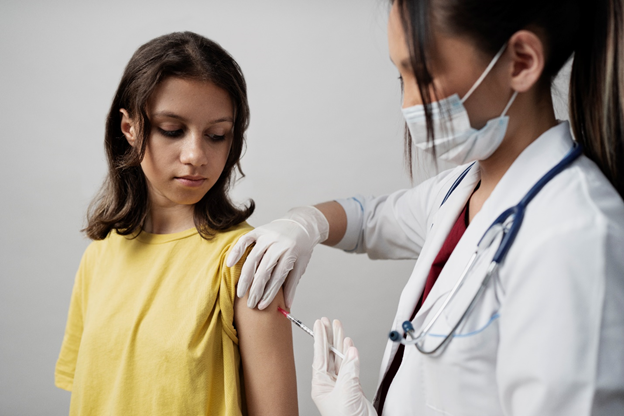Polio
Polio is a severe viral infection that was once common in the UK and around the world. Today it is less common because it can be prevented with vaccines.
Most people have no symptoms of polio and do not even know they are infected.
But in about one in a hundred people, the poliovirus causes temporary or permanent paralysis, which can be fatal.
Polio cases fell sharply in Britain when routine vaccination began in the mid-1950s.
No cases of polio have been reported in the UK since the mid-1990s. But the infection is found in some parts of the world, and there is little risk of it being brought back to the UK.
There is no cure for polio, so make sure you and your children are fully vaccinated against it.
Symptoms of Polio
About 95% of people with polio have no symptoms and survive the infection without knowing they are infected.
Some people experience an influenza-like illness 3 to 21 days after infection.
Its symptoms include:
- – High temperature (fever), 38 degrees Celsius (100.4 degrees Fahrenheit) or higher
- – Visible throat
- – Headache
- – Abdominal pain
- – Pain in the fist
- – Feeling of nausea and vomiting
These symptoms usually go away within a week.
In at least 1% of cases, the poliovirus attacks the spinal cord and underlying parts of the brain. It usually causes paralysis in the legs that develops over hours or days.
Paralysis is usually not permanent, and movement usually returns slowly over the next few weeks and months.
But some people are left with persistent problems. It can also be life-threatening if the breathing muscles are affected.
Momentary problems due to polio
While polio usually goes away without any other problems, it can sometimes cause permanent or lifelong problems.
About 1 percent of every 200 people with the infection will have at least partial permanent paralysis, and others may need long-term treatment and support.
These include:
- – Muscle weakness
- – Muscle spasms
- – Tight joints (contractures)
- – Body contours, such as bent toes or legs
Also, there is a possibility that someone who has had polio may have similar symptoms again, or an exacerbation of their current symptoms, many years later. This is called post-polio syndrome
Treatment of polio
There is currently no cure for polio. Treatment focuses on how the body tries to fight the infection, including supporting the body’s processes and reducing the risk of chronic problems.
This may include hospital bed rest, pain medication, breathing support and regular stretching or exercise to prevent muscle and joint problems in the arms and legs.
If polio infection leaves you with chronic problems, you may need long-term treatment and support.This may include physiotherapy to help with any movement problems, devices such as casts and braces to support weak limbs or joints, social medicine specialists to help you work through any difficulties, and Surgery is likely to be done to correct other aesthetics.
Polio immunization
Polio vaccine is provided as part of the MHS’s routine childhood immunization program.
It is offered in five separate categories:
- – at 8, 12 and 16 weeks of age – as part of the 6-in-1 (DTaP/IPV/Hib/HepB) vaccine
- – At 3 years and 4 months of age – as part of the 4-in-1 (DTaP/IPV) preschool booster
- – Ages 13 to 18 – As part of the 3-in-1 (Td/IPV) Teenage Booster
If you plan to travel to polio-affected countries, get vaccinated if you have not already been fully immunized or receive a booster dose if it has been 10 years or more since your last vaccination. Recommended.

